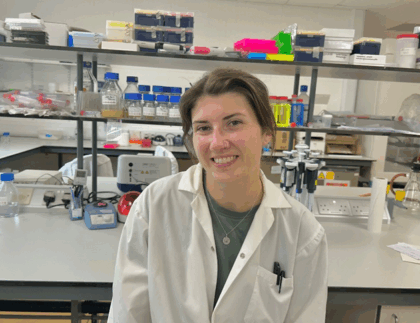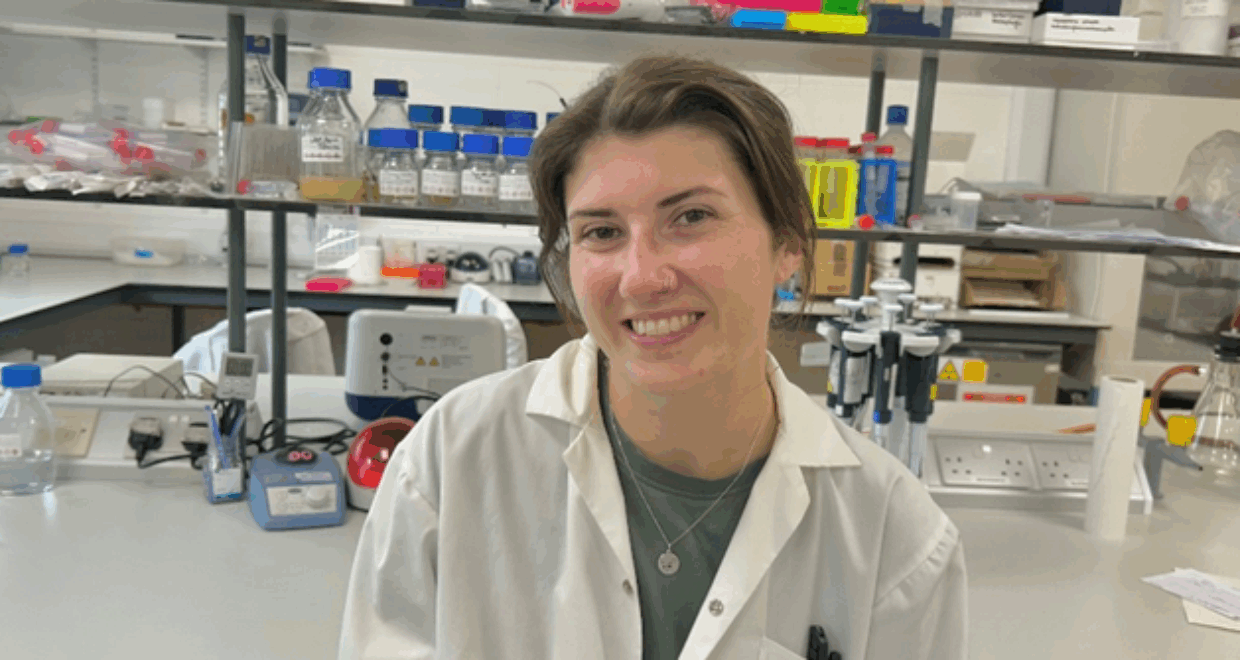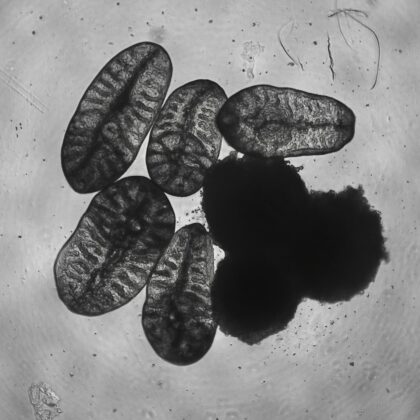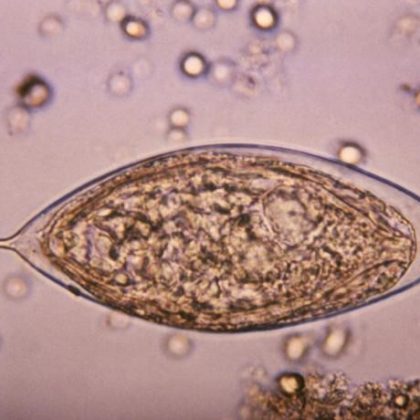Eve O’Kelly Awarded Irish Society for Parasitology William C. Campbell Award 2025
I started my career in biomedical science by completing an undergraduate degree in biopharmaceutical science, but parasites were never on my radar. That changed, however, when I began selecting a research project for my MSc in Biomedical Science and found myself unexpectedly intrigued by liver fluke, more specifically Fasciola hepatica. This led me to meeting Prof John P Dalton’s team and starting my MSc research project in the Molecular Parasitology Laboratory (MPL) at the University of Galway, Ireland. Clearly, I was enthralled by the world of parasitology, as I now am in the second year of my PhD working on the isolation and characterisation of F. hepatica vaccine candidates.
F. hepatica is a helminth parasite that is found worldwide and infects both humans and livestock such as sheep and cattle. It is estimated that up to 17 million people globally are infected with this parasite and 180 million are at risk of infection due to inadequate water sanitation, which leads to the contamination of food sources. It also causes huge losses to the livestock and agricultural industries in over 70 countries; in Ireland alone, this parasite causes €90M losses annually to our farming community, while worldwide this amount is €2.5 billion (likely much more!).
Helminth infections are difficult to control due to their complex lifecycles involving multiple hosts, their large genomes as multicellular organisms compared to other infectious pathogens like bacteria and viruses, and they have evolved the ability to modulate the host immune response. Recent studies in Ireland showed that over 60% of sheep flocks have liver fluke infections. With such high levels of infection in our livestock, the gold standard is to treat regularly with the drug Triclabendazole. However, as a result of over-use or mis-use there is a worrying spread in Fasciola with drug-resistance to this treatment. Therefore, going forward we urgently need an alternative, and greener, method to combat this parasite, such as the development of an effective vaccine. My PhD focuses on the isolation and characterisation of F. hepatica proteins that are of importance to the parasite that could be used as potential vaccine candidates.

One of the proteins I have worked on characterizing is F. hepatica enolase, a glycolytic enzyme known for its multifunctionality or moonlighting capabilities. We expressed and isolated a recombinant form of the enolase protein in our laboratory by inserting the gene into E. coli cells and harnessing the cells as protein expression factories. We completed characterisation studies on our protein with our colleague Dr Andrew Flaus at the University of Galway, confirming its molecular weight and assembly as a dimer by size exclusion chromatography, followed by assays to assess its enzymatic activity. First, we were able to identify enolase in the excretory/secretory products and total extract of the parasite using immuno-techniques. This led us to using fluorescently labelled antibodies and microscopy, where we localized enolase in the tissues of newly excysted juveniles and adult worms. Our findings showed that enolase is strongly associated with the tegument (surface layer) of Fasciola, where it appears to interact with host tissue at the parasite-host interface, making it a potential target for vaccines.

A visiting researcher to our lab at the time, Dr Javier González Miguel from the Institute of Natural Resources and Agrobiology of Salamanca, with whom we collaborated on this project, had previously completed work on parasites and their relationship to the host fibrinolytic system and from there the project came to life. Fibrinolysis is the breakdown of fibrin blood clots which is mediated by the main protease of this system, plasmin.
During the early stages of infection of fasciola, the parasite must burrow through the intestinal wall and extracellular matrix until it reaches the liver where it will mature into an obligate blood feeder. We found that F. hepatica enolase binds to the gut wall protein laminin potentially facilitating the parasite in crossing of the gut wall during its early migratory stages. We also confirmed that F. hepatica enolase enhances the generation of plasmin in the presence of plasminogen activators. This indicates that the parasite may be hijacking the host’s plasmin. This can be of benefit to the adult worm as they become obligate blood feeders in order to breakdown fibrin blood clots, by aiding the parasites nutrition.
These findings highlight enolase’s potential as a vaccine candidate, as blocking this pathway could impair the migration and nutrition of Fasciola hepatica. We now need to advance our studies to real-life vaccine trials in sheep…but that’s the story for another blog!
View the full list of Irish Society for Parasitology William C. Campbell Awards here.






